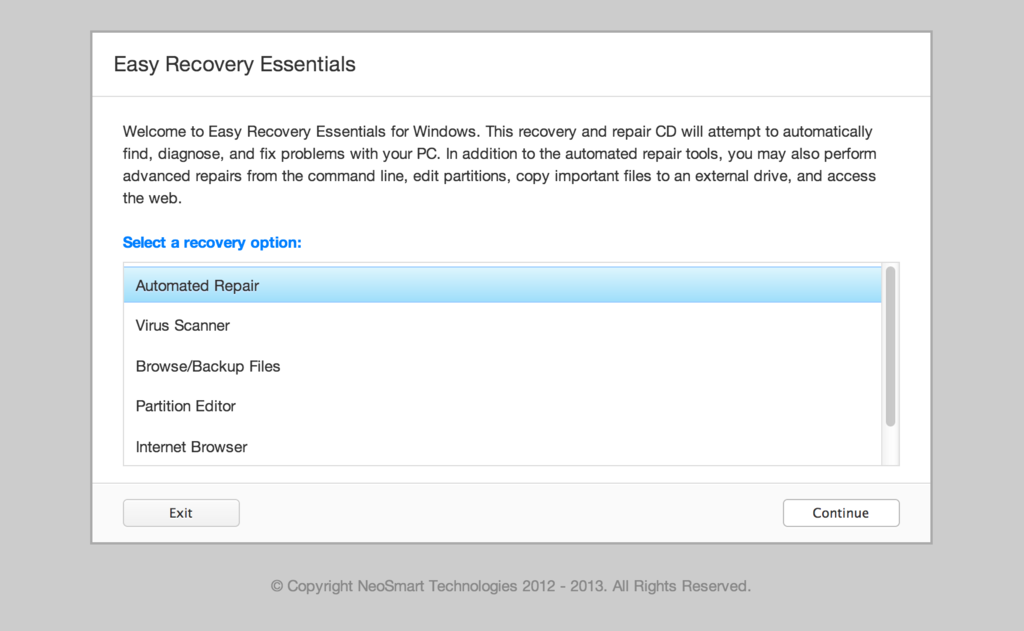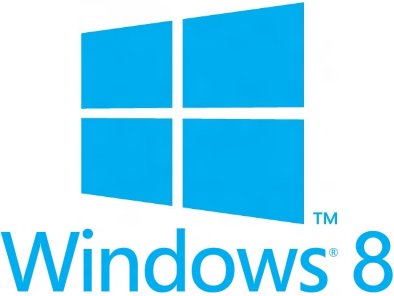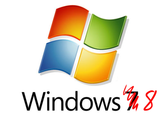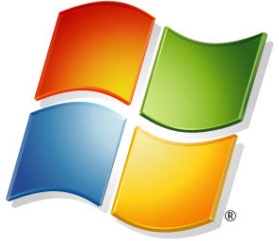 Windows 11 is here and it comes with a new version of Segoe UI Emoji, the font that’s used across the OS to render various emoji from Unicode codepoint sequences to the emoji you see on screen (developers: use Unicode.NET for your emoji needs!). With it, a number of emoji icons have been upgraded to a new look: some to mirror the connotations and semantics of other emoji fonts, others to be less disparaging. But there’s a less welcome surprise too, for those four… maybe five? of us that still remember the ill-fated Windows Phone fondly.
Windows 11 is here and it comes with a new version of Segoe UI Emoji, the font that’s used across the OS to render various emoji from Unicode codepoint sequences to the emoji you see on screen (developers: use Unicode.NET for your emoji needs!). With it, a number of emoji icons have been upgraded to a new look: some to mirror the connotations and semantics of other emoji fonts, others to be less disparaging. But there’s a less welcome surprise too, for those four… maybe five? of us that still remember the ill-fated Windows Phone fondly.
Tag Archives: microsoft
Windows users vulnerable to Meltdown/Spectre until at least January 9, 2018

Security-conscious Windows users attempting to protect themselves against Meltdown and Spectre attacks in the wild are being met with a deceptive “Your device is up to date” message — but they’re not yet protected.
In the days following the disclosure of CPU cache attacks Meltdown and Spectre, hardware, kernel, and software developers have rushed to provide security updates for their respective devices and platforms in an (ongoing) effort to secure their users against the wide-ranging (and not yet fully understood/internalized) side-channel vulnerabilities disclosed a few days ago on the 3rd of January, 2018.
For those that aren’t up to date on these attacks – stop now, and read this excellent LWN article on Meltdown and Spectre; if you’re so inclined, you can even have a look at the original Google Project Zero article where it all started.1
While the latter is more technical in nature, programming-inclined readers in the audience may find it to actually be easier to grok with its more definite and concrete approach, vs the somewhat abstract nature of pretty much all the other coverage out there. ↩
System.Threading.Thread, Universal Windows Platform, and the fragmentation of .NET Standard
This post is chiefly directed at .NET developers and others involved in the various stages of .NET deployment, in particular, anyone that’s been keeping tabs on the situation with the new cross-platform, open-source .NET Core initiative or .NET Standard, which came about as Microsoft’s response to the increased fragmentation of the .NET Platform as a result of the myriad of different deployment targets now available. If you’re not into that kind of stuff, feel free to skip this post, or read on and we’ll try to explain things sufficiently as we go through.
When a new Microsoft, with Satya Nadella at the helm, first open sourced the .NET Platform on November 12, 2014 it became clear that they fully intended to put everything they had into the initiative and that great things and big changes were coming to the .NET Framework and its languages. But what it also signaled was the inevitable beginning of a new level of fragmentation for the Framework, which had thus far – by and large – resisted any major fragmentation for the past 12 years of its existence.1 But taking a framework that was cobbled together from parts old and new, built atop of WIN32, GDI, and various Windows-specific anachronisms meant that porting the .NET Framework as-is to other platforms was nigh-impossible — and that major changes would have to be made to support this gargantuan effort.
There are notable exceptions to this, namely the .NET Micro Framework, the .NET Compact Framework, and Mono; however, these “members” of the .NET ecosystem – one not even by Microsoft – were never considered to be first-class .NET Targets within or without Microsoft. ↩
Download EFI and UEFI repair CDs for Windows
Welcome to the future. Ever since 2000, EFI (Extensible Firmware Interface) has struggled to replace the decades-old BIOS, and now, some 13 years later, it’s finally really here. More than ever before, new computers, laptops, notebooks, and other computing devices are being shipped that use an entirely new and very much different technology as the foundation that powers the actual hardware, sitting between your motherboard/CPU and the operating system.
EFI is pretty nifty and very powerful, and opens a lot of new and exciting possibilities for your computer. It lets Windows theoretically boot faster than ever before, and can protect your computer against malware and viruses thanks to enhanced security features like signed bootloaders. And for Windows users, EFI means GPT (GUID Partition Table) instead of MBR (Master Boot Record). Abbreviations got you confused? Don’t worry – it just means that your computer now supports hard disks that are bigger than ever before (more than 2TiB in size!).
Windows 8 Recovery Disk and Repair Disc Download
Download our recovery and repair disk for Microsoft Windows 8 and Windows 8.1 (also available for Windows Vista, 7, XP or Server editions) that can be used to access system recovery tools, giving you options of using an antivirus, System Restore, document and picture backup and recovery, automated system repair, and a command-line prompt for manual advanced recovery.
Download recovery disk for Windows 8/8.1

Our recovery disk is compatible with desktops, workstations, laptops, notebooks, netbooks, ultrabooks and servers from Dell, HP, Acer, Asus, Samsung, Lenovo, IBM, Toshiba, Compaq, Gateway or eMachines that have Windows 8 or 8.1 installed.
The disk is compatible with 32-bit and 64-bit editions of Windows 8 or Windows 8.1. It supports x86 and x64 platforms and works with EFI and MBR configurations.
Easy Recovery Essentials – or EasyRE – is a 50 to 135 MB ISO image that you can download and burn to any CD, DVD or USB drives.
With Easy Recovery Essentials you can recover and repair your computer.
Contents
About our recovery and repair disk
 It has become harder and harder to get recovery or installation disks for your computer as major PC manufacturers no longer distribute a recovery or repair CD/DVD with your purchase.
It has become harder and harder to get recovery or installation disks for your computer as major PC manufacturers no longer distribute a recovery or repair CD/DVD with your purchase.
A Windows 8 or Windows 8.1 installation DVD can be used to recover your computer. You can use it to access many recovery options, use System Restore and automatically fix boot errors or blue screens.
But instead of giving customers real recovery CDs and DVDs with their purchase of a computer (like notebooks, laptops, desktop computers etc.), PC manufacturers (like Dell, HP, Samsung, Acer, Lenovo, Toshiba and others) usually require you to make the recovery media by yourself.
If you can’t boot into Windows or your PC isn’t working, only a bootable recovery and repair CD/DVD/USB can save you.
Our recovery disk, called Easy Recovery Essentials, is an ISO image that you can download today and burn to any CDs, DVDs or USB drives.
You can boot from our disk to recover or repair your broken computer.
We provided instructions on how to do this below, see Burn to CDs, DVDs or USB drives.
With Easy Recovery Essentials you can:
- Find and fix errors automatically with Automated Repair
- Recover your PC from infections with the built-in antivirus
- Restore your PC to a working state
- Access and backup your most important data (like documents, pictures, music, videos and so on)
Easy Recovery Essentials is used by computer technicians and IT experts for its many features:
- Fully-featured visual partition editor
- Scriptable command line
- Advanced recovery options
- Web browser
Read more about EasyRE for computer repair professionals here.
Download recovery disk for Windows 8 and 8.1
Our recovery and repair disk uses a non-destructive repair process that can recover your PC without formatting your hard drive or reinstalling Windows.
Easy Recovery Essentials comes with:
- Powerful Automated Repair feature
- Antivirus scanner built-in
- Ability to access System Restore
- Web browser to browser the Internet
- Ability to backup your most important files (documents, videos, pictures, music and so on)
- Memory diagnostics and a command-line tools for advanced options
Update: Please note that this disk is no longer free, due to licensing restrictions imposed upon us.
Download Easy Recovery Essentials for Windows 8 and Windows 8.1
Our recovery disk supports x86 and x64 platforms and all Microsoft Windows 8 editions:
- Windows 8 (32-bit and 64-bit editions)
- Windows 8.1 (32-bit and 64-bit editions)
Our disk is in ISO image format. You can burn the image to any CDs, DVDs or USB drives and then use it as a bootable recovery media.
You cannot use a recovery or repair disk to install or reinstall Windows 8.
Burn to CDs, DVDs or USB drives
We published a guide on how to burn an ISO image to CD or DVD. Our recovery ISO image can be burnt to any CDs or DVDs and USB drives.
You can burn it with your favorite burning program. We published step-by-step instructions and guides on how to do this for any CDs or DVDs:
You can opt for a recovery USB instead: follow our guide on how to make a EasyRE recovery USB drive here.
Compatibility
Our recovery and repair disk works with any desktop computers, workstations, laptops, notebooks, ultrabooks, netbooks or servers computers from all major PC manufacturers:
- Dell
- HP
- Asus
- Acer
- Lenovo
- Samsung
- Toshiba
It’s also compatible with older or no longer available PC brands, such as:
- IBM
- Compaq
- Gateway Computers
- eMachines
If your computer runs Windows 8 or Windows 8.1, you can download Easy Recovery Essentials.
Dell
Our recovery disk is compatible with Dell computers:
- Dell Adamo
- Dell Inspiron
- Dell Studio
- Dell Vostro
- Dell XPS
- Dell Latitude
Do you have a Dell computer running Windows 8? Read our recovery and restore guide for Dell.
HP
Easy Recovery Essentials work with your HP computer. It’s compatible with the following series of HP PCs:
- HP ENVY
- HP EliteBook
- HP Essential Home
- HP Pavilion
- HP x2 models
Do you have a HP computer running Windows 8? Read our recovery and restore guide for HP.
Asus
Easy Recovery Essentials is compatible with Asus computers.
Do you have an Asus computer running Windows 8? Read our recovery and restore guide for Asus.
Acer
Our recovery disk can be downloaded by Acer customers. The disk is compatible with all Acer series and models:
- Aspire M and T, Aspire X and Predator G
- Aspire R, Aspire V3 and Aspire E
- Aspire S7, Aspire S5, Aspire S3, Aspire P, Aspire M, Aspire V7, Aspire V5
- Aspire One
Do you have an Acer computer running Windows 8? Read our recovery and restore guide for Acer.
Lenovo
Easy Recovery Essentials is compatible with Lenovo computers:
- Lenovo ThinkPad
- Lenovo IdeaPad
- Lenovo Thinkcentre
- Lenovo Ideacentre
Do you have a Lenovo computer running Windows 8? Read our recovery and restore guide for Lenovo.
Samsung
Easy Recovery Essentials is compatible with any Samsung laptops or desktops:
- Samsung ATIV Book, Gaming and Business PC series for laptops
- Samsung ATIV One for All-in-One desktops
Toshiba
Easy Recovery Essentials is compatible with all Toshiba series and models:
- Toshiba Satellite
- Toshiba Qosmio
- Toshiba Portege
- Toshiba Tecra
- Toshiba Kira family series
- Toshiba All-in-One desktop series
Do you have a Toshiba computer running Windows 8? Read our recovery and restore guide for Toshiba.
IBM, Compaq, Gateway, eMachines
These PC manufacturers were either acquired by another company or they are no longer on the market. Our recovery disk is compatible with these PCs, if your computer runs the supported Windows versions:
- Windows 8 and Windows 8.1
- Windows 7 (all editions)
- Windows Vista (all editions)
- Windows XP
- Windows Server 2003, Server 2008, Server 2012
IBM
Lenovo acquired IBM’s personal computer division in 2005.
Easy Recovery Essentials is compatible with IBM computers and laptops (like the ThinkPad series) and Lenovo computers (see Lenovo).
Compaq
HP acquired Compaq in 2002.
Easy Recovery Essentials is compatible with Compaq desktops and laptops (including the Presario series) and HP computers (see HP).
Gateway and eMachines
eMachines was acquired by Gateway Computers in 2007. In 2007, Gateway Computers was acquired by Acer. The eMachines brand was used until 2012.
Easy Recovery Esssentials is compatible with Gateway computers:
- Series SX, DX and One ZX
- NE and NV series
- LT series
Do you have a Gateway computer running Windows 8? Read our recovery and restore guide for Gateway.
Easy Recovery Esssentials is compatible with eMachines PCs and Acer computers (see Acer).
Disk for Windows 7, Windows Vista, Windows XP or Server editions
You can download Easy Recovery Essentials for other versions of Windows, such as Windows 7, Windows Vista, Windows XP or the Windows Server editions.
Windows 7
Read more about our recovery disk for Windows 7.
Our recovery disk supports Windows 7 (32-bit and 64-bit) and its editions: Ultimate, Enterprise, Professional, Home Premium, Home Basic and Starter.
Download the disk for Windows 7.
Windows Vista
Read more about our recovery disk for Windows Vista.
Easy Recovery Essentials supports Windows Vista (32-bit and 64-bit) and its editions: Ultimate, Enterprise, Professional, Home Premium, Home Basic and Starter.
Download the disk for Windows Vista.
Windows XP or Server editions
If your computer runs Windows XP or Windows Server, you can download Easy Recovery Essentials.
Our disk supports Microsoft Windows XP, including the Service Pack updates:
- Windows XP Service Pack 1 (SP1)
- Windows XP Service Pack 2 (SP2)
- Windows XP Service Pack 3 (SP3)
Download the disk for Windows XP.
You can download the disk for any of the following Windows Server editions:
- Windows Server 2003
- Windows Server 2008
- Windows Server 2012
Download the disk for Windows Server.
Support
Please don’t ask for help below, it’ll get real cluttered real soon!
Open a support thread at https://neosmart.net/forums/ and we’ll help you resolve your problem ASAP.
Introducing Windows Recovery Essentials
There have been whispers and rumors making the rounds all over the internet for the past few months regarding the licensing of WinPE. The rumors are, in fact, true: as of January 2012, Microsoft has no longer been renewing any Windows Pre Installation Environment licensing agreements with any partner companies; all of whom are now required to find alternative means of meeting their bootable environment requirements.
As many of you are aware, NeoSmart Technologies is one of the companies licensing Windows PE from Microsoft Corp. Back in August of last year, we revealed that we’d struck a deal with Microsoft wherein we’d be licensing Windows PE for use in our system recovery CDs, making them legally available for download for our users. Unfortunately, that agreement will not be in place for much longer, and the recovery and repair CDs in their current form will soon no longer be available for purchase.
Windows 8 CP (Build 8250) Wallpapers Now Available
As trivial as it may seem, ever since the Windows Longhorn beta program one of the most exciting “features” of a new Windows build release are the new wallpapers that come with it. Build 8250 comes with six new wallpapers (and one old one), which we’ve added to our gallery.
The New Windows 8 Metro Bootmenu/Bootloader
 This is a post that should probably have been made a little earlier, but we’ve been rather busy cranking out new EasyBCD versions and working on some exciting new developments. We’ve had a lot of questions regarding EasyBCD‘s compatibility with Windows 8, and what our findings are regarding the new Windows “touch-enabled” bootloader screen. In this post, we’ll cover the new bootloader and what works and doesn’t with EasyBCD.
This is a post that should probably have been made a little earlier, but we’ve been rather busy cranking out new EasyBCD versions and working on some exciting new developments. We’ve had a lot of questions regarding EasyBCD‘s compatibility with Windows 8, and what our findings are regarding the new Windows “touch-enabled” bootloader screen. In this post, we’ll cover the new bootloader and what works and doesn’t with EasyBCD.
The New Windows 8 Bootloader
Literally the very first thing you notice when installing and testing Windows 8 Developer Preview is the new boot screen. I personally find it to be very cluttered and unorganized, and generally aesthetically unappealing. However, compared to the decades of text-based boot selection menus that people are accustomed to, reviewers are seeing this as a dramatic improvement.
Microsoft plays the blame game fast and loose with Internet Explorer 10 and Windows 8
Yesterday, Microsoft made available the first public beta of Windows 8. The developer preview can be downloaded on the Microsoft website, and has received plenty of media coverage and has been the subject of much scrutiny and review. However, in our testing of Windows 8 for compatibility with NeoSmart software and products, we came across a rather, shall we say, interesting approach that Internet Explorer 10 now takes to its crashes. With Windows 8, as with previous versions, when an application hangs or crashes, an error reporting dialog is displayed prompting the user to select an action to take with the crashed program.
What’s different with Windows 8 and Internet Explorer 10 is that Microsoft chooses to deflect the blame from itself, and pin it instead on the unfortunate owners of the website that the user had last visited. In the following screenshot, Internet Explorer 10 has crashed after being unable to handle some of the web scripting on our website. Except instead of the error dialog you would expect (something to the effect of “Internet Explorer has stopped responding,” an error caption which we are all familiar with and of which the web is full), the error dialog instead reads:
neosmart.net is not responding.
Windows Recovery Discs Updated, Reinstated

Almost four years ago, NeoSmart Technologies published a Windows Vista repair and recovery CD that could be used to treat common boot issues and recover from catastrophic system failure in case you didn’t have a Windows setup CD handy.
 Over the years, we’ve added more recovery CDs to the collection, ending up with a complete portfolio of repair CDs for Windows Vista and Windows 7 in both 32- and 64-bit flavors. We’ve had the good fortune of being able to host these CDs on our site in one form or the other for free download to millions of users around the globe.
Over the years, we’ve added more recovery CDs to the collection, ending up with a complete portfolio of repair CDs for Windows Vista and Windows 7 in both 32- and 64-bit flavors. We’ve had the good fortune of being able to host these CDs on our site in one form or the other for free download to millions of users around the globe.
Three months ago, we were contacted by the legal department at Microsoft Corporation asking us to discontinue hosting these files. Until this point, we were not aware that Microsoft was displeased with our hosting of the CDs and in fact enjoyed a rather healthy relationship with the Microsoft support forums where victims of PC crashes would be directed to our site to download a copy of the repair CDs.
Since then, we have been in talks and negotiations with the Microsoft legal and licensing divisions, trying to work out a method whereby we could provide our users and visitors with access to these CDs once again. Today we’re excited to announce that these CDs are once more available for download!
